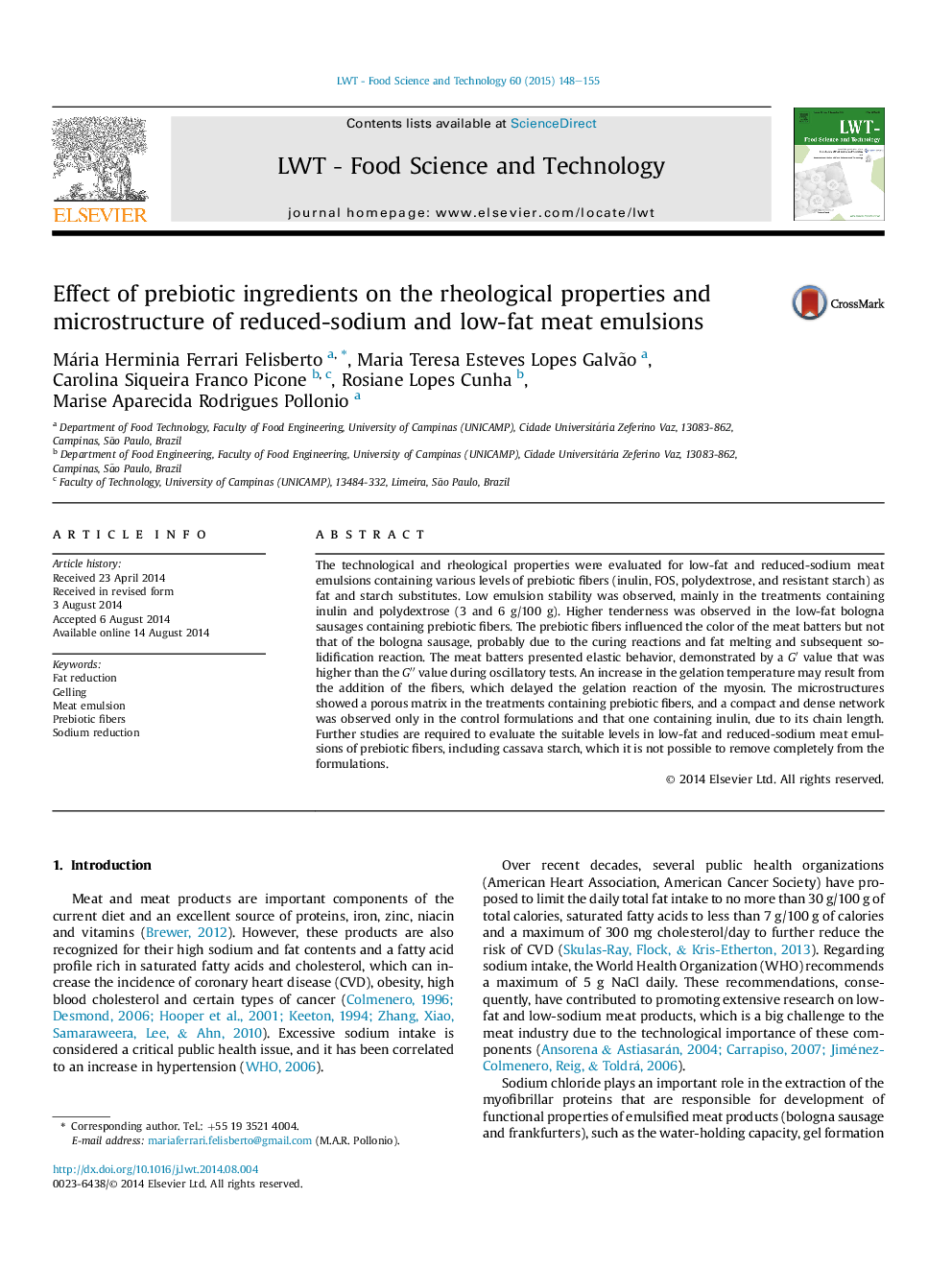| Article ID | Journal | Published Year | Pages | File Type |
|---|---|---|---|---|
| 6402823 | LWT - Food Science and Technology | 2015 | 8 Pages |
â¢Prebiotic fibers as fat substitutes reduce emulsion stability of meat batters.â¢Inulin resulted in microstructural characteristics similar to control bologna sausage.â¢After cooking, there were no significant differences regarding to color meat batters.â¢Prebiotic fibers increased the gelation temperature due to their complex structure.
The technological and rheological properties were evaluated for low-fat and reduced-sodium meat emulsions containing various levels of prebiotic fibers (inulin, FOS, polydextrose, and resistant starch) as fat and starch substitutes. Low emulsion stability was observed, mainly in the treatments containing inulin and polydextrose (3 and 6Â g/100Â g). Higher tenderness was observed in the low-fat bologna sausages containing prebiotic fibers. The prebiotic fibers influenced the color of the meat batters but not that of the bologna sausage, probably due to the curing reactions and fat melting and subsequent solidification reaction. The meat batters presented elastic behavior, demonstrated by a Gâ² value that was higher than the Gâ³ value during oscillatory tests. An increase in the gelation temperature may result from the addition of the fibers, which delayed the gelation reaction of the myosin. The microstructures showed a porous matrix in the treatments containing prebiotic fibers, and a compact and dense network was observed only in the control formulations and that one containing inulin, due to its chain length. Further studies are required to evaluate the suitable levels in low-fat and reduced-sodium meat emulsions of prebiotic fibers, including cassava starch, which it is not possible to remove completely from the formulations.
